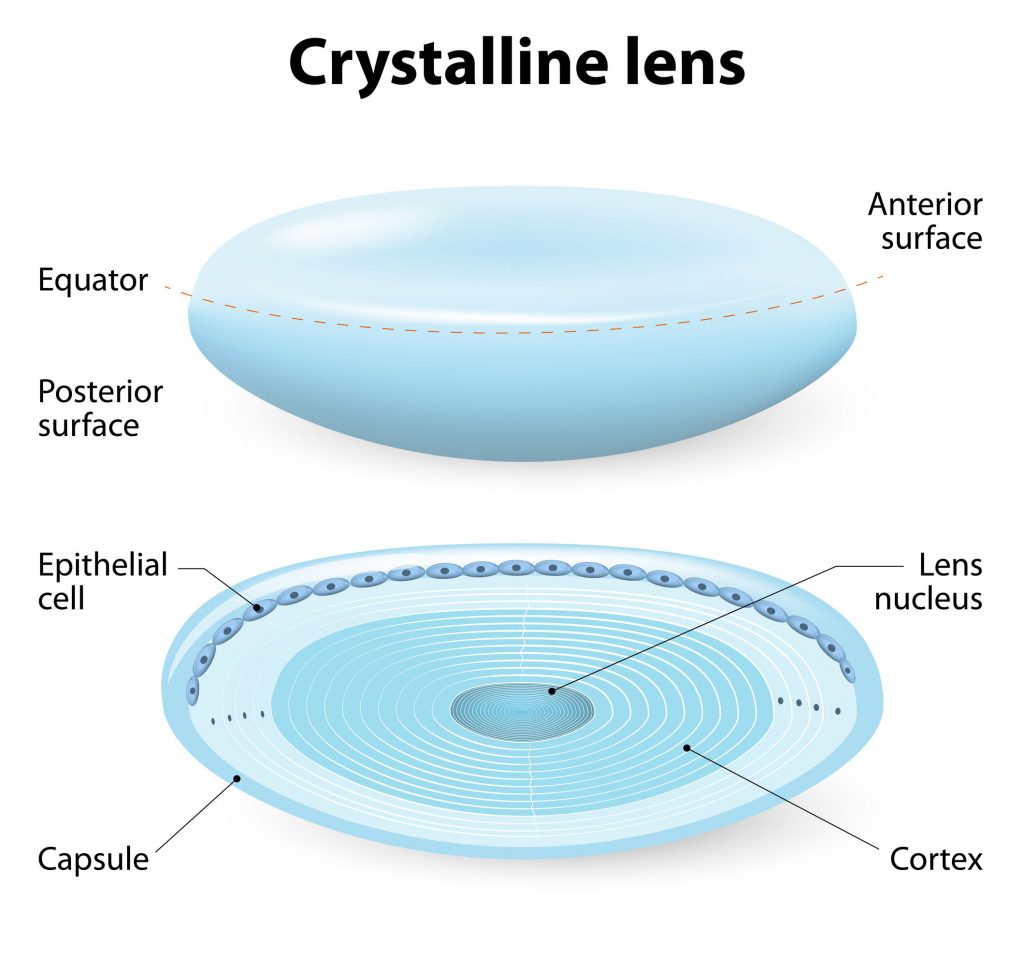
Cataracts are treated by replacing the clouded lens with an artificial lens called an intraocular lens (IOL). All but one of the FDA-approved IOLs are monofocal or multifocal lenses. That one exception is Crystalens®.
Accommodation
Crystalens is an accommodative IOL. Accommodation is the ability of the eye’s natural lens to switch focus effortlessly between different distances. If you have normal eyes and you look, for example, at a distant tree, then your vehicle’s dashboard, and then your fingernails, they are all clearly in focus without you having to do anything to accomplish that.
The eye’s lens does that by changing its curvature to match the distances. There is a circular muscle around the lens called the ciliary muscle. It is attached to the lens with multiple fibers and as it contracts and relaxes the lens becomes flatter (for far distance) or steeper (for near distance). Please see How the Eyes Work for more details.
When you have cataract surgery and the natural lens is removed, that accommodative ability is removed with it. Therefore IOLs now use various technologies to mimic accommodation. Multifocal IOLs have an arrangement of concentric zones or steps built into them, each of which reacts differently to light.
How Crystalens Works
The Crystalens IOL has no zones or steps. Instead it is attached to the ciliary muscle. When you change focus from near to far, the ciliary muscles does what it always has done, and relaxes (for near) then contracts (for far). This moves the Crystalens forward slightly (for near) and back slightly (for far). For intermediate distances, it moves forward or back to a lesser extent.
Crystalens received FDA approval for treating cataracts in late 2003. The Crystalens manufacturer is Bausch & Lomb and in 2008 they announced FDA approval of an updated Crystalens called Crystalens HD™. It is designed to give better depth of focus, providing clearer near vision without compromising other distances.
The Crystalens Procedure
Cataract surgery is much the same regardless of which particular IOL you are using. First a tiny incision is made near the edge of the cornea. An ultrasound probe inserted through it breaks up the natural lens into small fragments. These are easily removed by gentle suction. Then your Crystalens IOL is inserted through the same incision.
Your eye surgeon will position the Crystalens correctly, attaching it to the ciliary muscle. It is placed inside the same capsular bag (pocket) where the natural lens was. Typically no suturing is necessary as the incision will heal by itself. Please see our Cataract Surgery page for more details.
For more information on cataracts and their treatment, you can see Questions About Cataracts and Cataract Surgery or read our blog.
If you would like to learn more about the Crystalens IOL or find a qualified eye surgeon in your area, please contact one of our cataract surgeons today.
